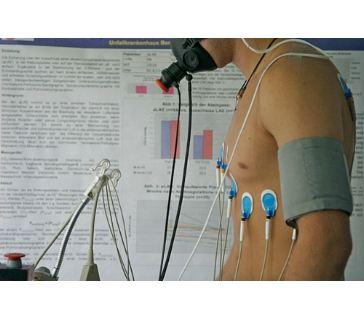Asthma medicines

Asthma medicines are used to control or prevent the symptoms of asthma. They are normally taken as inhalers (also known as ‘puffers’).
Why would I take asthma medicines?
What are the main types of asthma medicine?
How do asthma medicines work?
How to take asthma medicines
Special care
Side-effects of asthma medicines
Interactions of asthma medicines with other medicines
Names of common asthma medicines
Why would I take asthma medicines?Your doctor may prescribe these medicines if you have asthma or other respiratory problems such as chronic obstructive pulmonary disease (COPD). For more information on these conditions, please see Related topics.
What are the main types of asthma medicine?
There are two main types of asthma medicines. These are:
-
relievers, which treat your asthma symptoms – you take these when you feel asthma symptoms starting
-
preventers, which help to prevent asthma symptoms – if you need these, you will have to take them every day
If you have mild asthma symptoms that don't happen often, you will just need a reliever. You will need to have a preventer as well if:
· you need to use your reliever inhaler three or more times a week
· your asthma symptoms wake you up once a week or more
· you have had an asthma attack in the last two years
Preventers are not used to treat an asthma attack, but they help prevent them. Regular use of preventers can stop some of the long-term changes to the lungs caused by repeated asthma attacks, and so help to reduce the number of asthma attacks you have.
Relievers
The main type of reliever medicines are called short-acting selective beta2 adrenoreceptor agonists (or short-acting beta2 agonists for short).
These work by copying the effects of natural substances – adrenaline and noradrenaline – produced in the body. These substances are chemical messengers that the body produces as part of the ’fight or flight’ reaction. They prepare the body for exercise or a stressful situation. One of their effects is to open up the airways (bronchodilation) so that more air can reach the lungs.
Short-acting beta2 agonists are used to relieve symptoms. They work within 30 minutes of taking them and the effects last for three to five hours. Long-acting beta2 agonists take longer to work but the effects can last up to 12 hours.
Preventers
The main preventer medicines are the inhaled corticosteroids (or steroids for short). These work by reducing the amount of inflammation in your airways. This eases the swelling and narrowing of the airways, and also reduces the amount of mucus produced in the lungs.
Inhalers that contain a combination of a beta2 agonist and a steroid or another asthma medicine are also available.
You may need to have other preventer medicines if short-acting beta2 agonists in combination with inhaled steroids aren’t completely controlling your asthma. These include long-acting beta2 agonists, leukotriene receptor antagonists and theophylline. Leukotriene receptor antagonists work by reducing the inflammation in your airways. They can be particularly helpful for people who also have allergic conditions. Theophylline helps to improve breathing, but side-effects are common and it is only used occasionally.
Most asthma medicines come as inhalers, also known as ‘puffers’. They are also available as tablets, nebuliser solutions and injections for treating more severe asthma.
Beta2 agonists and inhaled steroids are usually taken through an inhaler. Beta2 agonists usually come as blue inhalers and inhaled steroids usually as brown, orange or red inhalers. These come in different doses per puff, and with different mechanisms for releasing the dose. Normally you take one or two puffs at a time.
To get the full benefit of your asthma medicines, follow your doctor's advice carefully about how to use your inhaler(s). For example, you need to take inhaled steroids every day, even if you don't have symptoms, for them to work properly.
It can be tricky to co-ordinate breathing in and ‘firing’ your inhaler. Your doctor or specialist asthma nurse will show you how to use your inhaler(s) properly, and will also check your technique from time-to-time.
You can use a spacer device with an inhaler to make it easier to inhale the medicine. A spacer is a tube that clips onto the inhaler. At the other end of the tube is a mouthpiece to breathe in and out of. A spacer allows you to activate the inhaler, then inhale, in two separate steps, so you don't need to co-ordinate breathing and pressing the puffer. Using a spacer means more medicine reaches your lungs. This means you may be able to take a lower dose – reducing the risk of side-effects.
Spacers are useful for children, and there are spacers available with masks for babies. There are also devices that make it easier to activate inhalers, which are useful for people who have sore hands and who find handling their inhaler difficult. However, spacers are useful for everyone, especially during an asthma attack.
Always ask your doctor for advice and read the patient information leaflet that comes with your medicine.
Special care
Pregnancy and breastfeeding
Asthma medicines can be taken as normal if you are pregnant or breastfeeding. It's particularly important to control asthma symptoms during pregnancy so that you don't have a severe asthma attack, which can affect your pregnancy, the baby or the birth.
Side-effects of asthma medicines
Side-effects are the unwanted effects of taking a medicine. If you have side-effects, it's important to talk to your doctor or the healthcare professional who prescribed your medicine before you stop taking it. This section does not include every possible side-effect of asthma medicines. Read the patient information leaflet that comes with your medicine for more information.
Beta2 agonists
Most people who take beta2 agonists don't have any problems. Possible side-effects include:
-
slight shakiness of the hands
-
restlessness
-
nervousness
-
headache
-
muscle cramps
-
flushing
Rare, but more serious, side-effects include:
-
fast or irregular heart rate
-
sleep and behaviour disturbances in children
-
allergic reactions
You can reduce the side-effects by rinsing your mouth out and gargling with water after using your inhaler. You should not swallow this water.
Inhaled steroids
Inhaled steroids are unlikely to cause serious side-effects because they are delivered directly to the lungs, with only small amounts getting into your bloodstream. However, they can give you a husky or hoarse voice. They can also give you a sore mouth or throat due to a fungal infection called candidiasis. You can help prevent this by using a spacer to help reduce the amount of the drug that stays in your mouth and throat, or by rinsing your mouth with water or cleaning your teeth after using your inhaler.
Other side-effects include a slightly increased risk of glaucoma, an eye condition caused by a build-up of pressure in the eye.
If you need inhaled steroids at high doses, you will be given a 'steroid card' to carry with you at all times saying what medicine you are taking.
Although inhaled steroids don't seem to slow down children's growth in the same way as oral steroids do, children taking inhaled steroids for a long time need to have their height monitored.
Leukotriene receptor antagonists
The side-effects of leukotrine receptor antagonists can include:
· digestive problems such as stomach pain, sickness, indigestion and diarrhoea
· an allergic reaction to the medicine
· dry mouth and feeling thirsty
· sleep disturbances
· emotional changes, such as feeling agitated, aggressive or depressed
· shakiness
· pain in muscles or joints
Theophylline
The side-effects of theophylline can include:
· fast or irregular hear beats
· feeling sick
· headache
· difficulty sleeping
· fits
Interactions of asthma medicines with other medicines
Check with your doctor or pharmacist before you take any other medicines or herbal remedies at the same time as your asthma medicine.
Names of common asthma medicines
Asthma medicines are shown in the table.
All medicines have a generic name. Many medicines also have one or more brand name. Generic names are written in lower case, whereas brand names start with a capital letter.
| Generic names | Brand names |
| Short-acting beta2 agonists | |
| bambuterol | Bambec |
| salbutamol | Airomir, Asmasal Clickhaler, Cyclohaler, Easyhaler, Pulvinal, Salamol Easi-Breathe, Salbulin Novolizer, Ventmax SR, Ventolin Accuhaler |
| salmeterol | Serevent Accuhaler, Serevent Diskhaler |
| terbutaline | Bricanyl Turbohaler |
| Long-acting beta2 agonists | |
| formoterol | Atimos Modulite, Foradil, Fostair (a combination of beclometasone and formoterol), Oxis |
| Inhaled steroids | |
| beclometasone | Asmabec Clickhaler, Beclazone Easi-Breathe, Becodisks, Clenil Modulite, Qvar, Fostair (a combination of beclometasone and formoterol) |
| budesonide | Novolizer, Pulmicort, Symbicort – a combination of budesonide and formoterol |
| ciclesonide | Alvesco |
| fluticasone | Flixotide, Seretide - a combination of fluticasone and salmeterol |
| mometasone furoate | Asmanex |
| leukotriene receptor antagonists | |
| montelukast | Singulair |
| zafirlukast | Accolate |
| theophylline | Nuelin SA, Sio-Phyllin, Uniphyllin Continus |
This section contains answers to common questions about this topic. Questions have been suggested by health professionals, website feedback and requests via email.
What should I do if I forget my asthma inhaler when I'm away from home?
What is a nebuliser? Do I need one for my asthma?
Are there any complementary therapies I can try to control my asthma?
What should I do if I forget my asthma inhaler when I'm away from home?
Answer
Forgetting or losing your asthma inhaler when you are away from home can be extremely dangerous. If this happens, there are several places you can contact to arrange asthma treatment.
Explanation
If you have asthma, it's important that you take all your asthma medicines with you when you are away from home. If you lose or forget them, there are several places you can contact to get emergency treatment and prescriptions, including:
-
GP surgery
-
out-of-hours service
-
walk-in-centre/urgent care centre
-
hospital emergency department
-
ambulance service
You can also buy emergency asthma inhalers from a pharmacy. You will be asked to leave your name, address and your GP's details with the pharmacist so that they can get a prescription later.
It's useful to keep spare inhalers in your car or at work in case you forget your asthma medicine. If you have a child with asthma, you should give spare asthma inhalers to his or her school or carers. Remember to check the expiry dates on your spare inhalers regularly to make sure they don't go out of date.
If you have any questions or concerns about your asthma medicine, talk to your GP.
What is a nebuliser? Do I need one for my asthma?
Answer
A nebuliser is a machine that makes a fine mist of medicine that you breathe in through a mask or mouthpiece. Most people with asthma don't need to use a nebuliser – an inhaler or spacer is just as effective.
Explanation
Nebulisers are usually only used in emergency situations when someone is having an acute asthma attack – they are most often used in GP surgeries or accident and emergency departments. They can deliver high doses of reliever medicine quickly through a mouthpiece or mask.
People who suffer from severe asthma or have attacks that come on very quickly may need to have a nebuliser at home. Also, very young children (under the age of six) may need a nebuliser if they are having difficulty using a spacer. You should ask your doctor if you think a home nebuliser would be useful. If your doctor agrees, it's very important that you learn how to use it properly (your GP or asthma nurse will teach you how) and make sure it's in good working order at all times.
Very few people do actually need home nebulisers. Most people with asthma will only ever need an inhaler or spacer to deliver their asthma medicine. These methods are just as effective and much more convenient than using a nebuliser.
If you have any questions or concerns about nebulisers or asthma, talk to your doctor.
Are there any complementary therapies I can try to control my asthma?
Answer
There is little or no evidence to say that complementary therapies help control symptoms of asthma. The only therapy that has been found to be of any benefit is the Buteyko breathing technique.
Explanation
Research into complementary therapies such as herbal and traditional Chinese medicine, acupuncture, homoeopathy, hypnosis, manual therapy, dietary supplementation and many others, has found no evidence to show that they are helpful in controlling asthma symptoms. If you have asthma, you shouldn't rely solely on complementary therapies – they should only be used in addition to the asthma medicines prescribed by your GP.
There may be risks associated with using certain complementary medicines. These can include potentially harmful interactions with your prescribed asthma medicines, incorrect dosing and a build-up of chemicals in your body.
The only complementary therapy that has been shown to have any effect in controlling asthma symptoms is the Buteyko breathing technique. This is a breathing technique that focuses on controlling hyperventilation (when you start breathing abnormally fast or deeply).
Talk to your GP if you have any question or concerns about asthma or complementary therapies.
Further information
· electronic Medicines Compendium
www.emc.medicines.org.uk
Sources
· Joint Formulary Committee, British National Formulary. 57th ed. British Medical Association and Royal Pharmaceutical Association of Great Britain, 2009: 148–182
· Rang H, Dale M, Ritter J, et al. Pharmacology. 6th ed. London: Churchill Livingstone, 2007
· All about asthma. Asthma UK. www.asthma.org.uk, accessed 6th May 2009
· British guideline on the management of asthma. Scottish Intercollegiate Guidelines Network (SIGN), 2008. www.sign.ac.uk
· Simon C, Everitt H, Kendrick T. Oxford handbook of general practice. 2nd ed. Oxford: Oxford University Press, 2005: 380
This information was published by Bupa’s health information team and is based on reputable sources of medical evidence. It has been peer reviewed by Bupa doctors. The content is intended for general information only and does not replace the need for personal advice from a qualified health professional.
Publication date: September 2009.
Related topics
Asthma in adults
Asthma in children
Chronic obstructive pulmonary disease
















